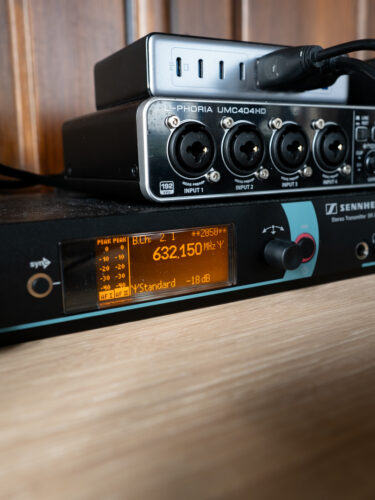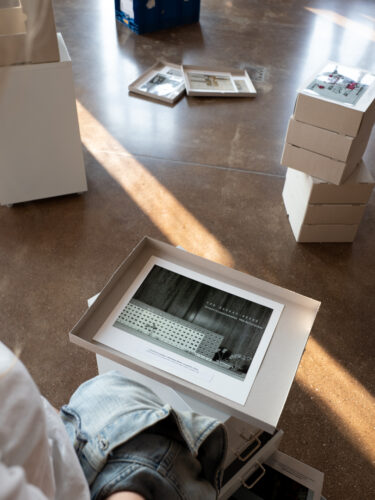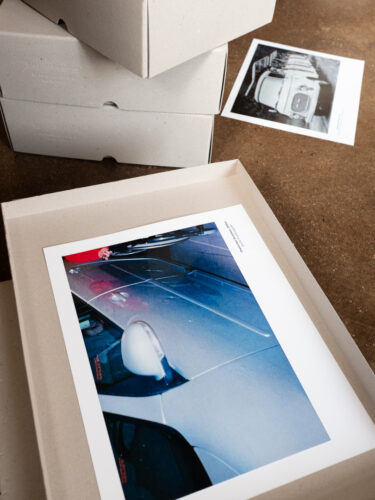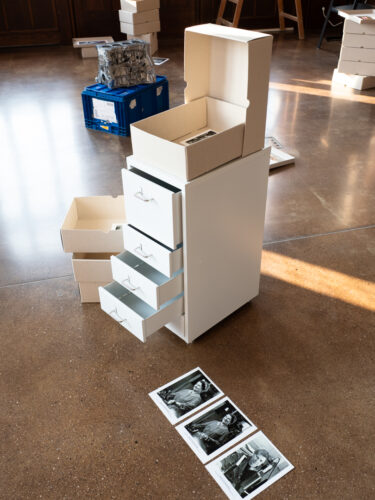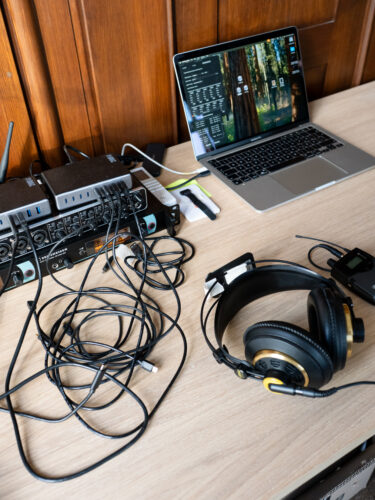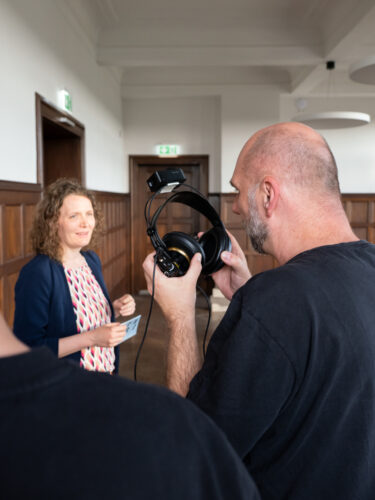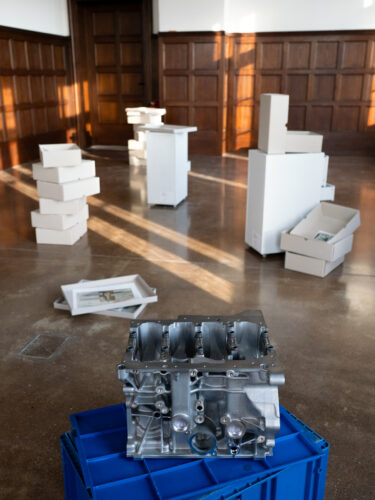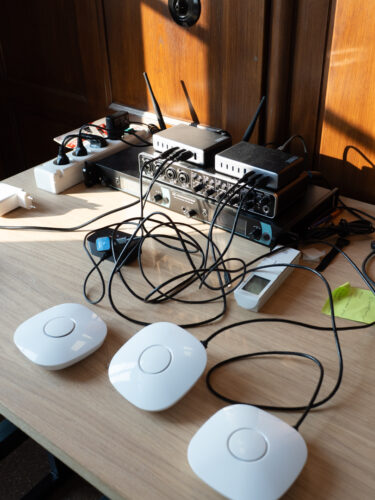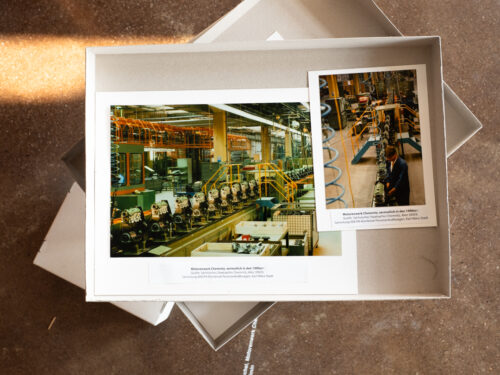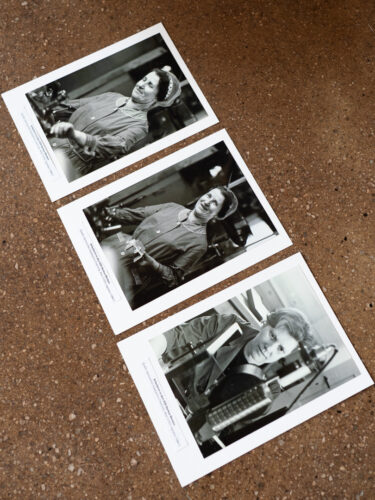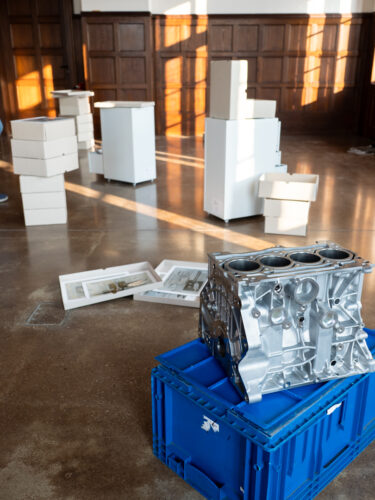Rattling landscapes, humming engines. A fragmentary, composable and accessible archive of car stories in Chemnitz
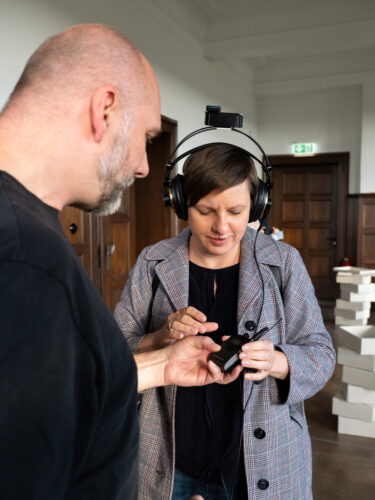
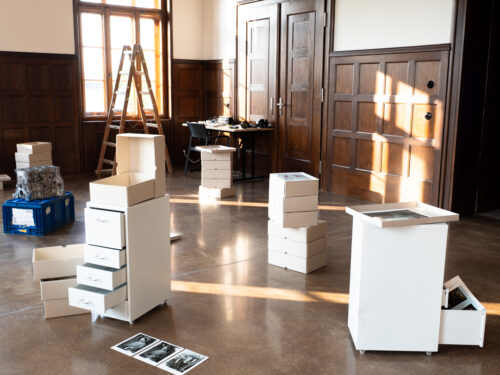
The idea, the working process and the FUNKEN Kolleg “Pinpoint X Emebeat X Frederike Moorman”
(c) Videography and editing by Florian Schurz.
Participants
Pinpoint
Ian Jagiella from Pinpoint GmbH focusses on the relationship between humans and machines, particularly in the context of sensory perception and cognitive processes. Building on his studies in “Sensory and Cognitive Psychology” at Chemnitz University of Technology, he works at Pinpoint on the intuitive design of interfaces between technology and users.
X
Embeat
Matthias Millhoff aka. emebeat works at the interface of immersive sound art, performative formats and interactive spatial concepts. He designs hybrid sound spaces for game theatre, develops installative sound art and uses modular synthesizers to improvisationally explore the interplay of structure and intuition.
X
Frederike Moormann is a sound and radio artist and artistic researcher. Her practice combines archival research, sound, public space and collaborative performative elements to explore how historical ruptures continue to shape power relations and social connections today.
Lefteris Krysalis is a sound and radio artist and researcher with a degree in Art History and an MFA in Media Arts. As a PhD candidate at the Bauhaus University Weimar, he investigates soundscapes and the politics of listening.
Diana Karle is a sound and performance artist. She develops sonic encounters in which collected sounds, stories and spatial rhythms come together. She uses technology as a means to shift boundaries between human and non-human actors.
The result of artistic and technological collaboration – rattling landscapes, humming engines. A fragmentary, composable and accessible archive of car stories in Chemnitz
Engines whirring. Machines rattle. Voices whisper, sing, hum and tell their car stories. The immersive interior audio walk explores the sonic traces of the automotive industry in Chemnitz. Between intimacy and industrial heritage, between memory and the present.
Chemnitz’s industrial past is characterised by historical ruptures – National Socialism, the GDR, reunification – and at the same time by continuities in work and identity. The car is an intimate place of personal affection and at the same time integrated into large-scale industrial processes.
Based on the local environment – in particular a nearby engine plant – the audio walk combines personal memories and work biographies with binaural sound experience and spatial navigation of the visitors through the space.
Photographs: (c) Michele Scognamillo
Backgrounds
Even before the FUNKEN Kolleg, Pinpoint GmbH felt the need to test its own technology in an artistic context. The initial impetus for this came from an exchange with Matthias Millhoff, whose work on auditory perception in space through movement inspired the idea of an interactive installation – a spatial sound environment whose dynamics are directly influenced by physical movement. His expertise in dealing with tracking technologies, sensor data and spatial sound created the link between Pinpoint’s technology and the experimental sound artists around Frederike Moormann.
The group contributes content to the collaboration and at the same time builds a bridge to Chemnitz’s industrial history: The automobile is at the centre of their contribution. They are researching local archives in order to pick up on historical narratives – and at the same time develop possible statements about the future.
What changes when archive material on the history of the automotive industry is not only viewed, but also physically experienced through movement in space?
How can such abstract questions be technically realised?
What actions can be triggered simply by changing one’s own position in space – and in what practical contexts does such a relationship between perception and action become relevant?






